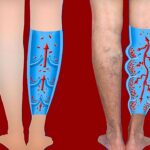The pathologies like cardiovascular diseases of the human body are vastly linked to the cellular reactions and circulatory flow of blood from the network of capillaries, arteries, and veins. This regulation of the circulatory system maintains the vascular health of an individual. Different incidences can encounter the biological functions of the vascular system. The overexpressed concentration of ROS can be a significant natural cause of vascular abnormalities; however, another secondary possibility is accidents, falls, or injuries. For the latter option, physiotherapy is hands down the best treatment. The recruitment of physiotherapy assistance might be a part of the medication process or the follow-up after vascular surgery is practised on the patient.
Vascular diseases and physiotherapy
All the vascular injuries and disorders affecting the structural integrity, functional ability, and immunological role of arteries, veins, vessels, and capillaries are referred to as vascular diseases. Some of these are hypertension, cardiovascular disorders, atherosclerosis, and pulmonary embolism, which usually employ physiotherapy techniques for recovery. Other mild vascular injuries or sufferings can be treated by incorporating exercise routines and physiotherapy. Vascular treatments undergone through practicing procedures of physio are related to
- Intermittent claudication
- Peripheral arterial diseases
- Limb ischemia
- Cerebrum-vascular injuries
- Respiratory and chest issues
Treatment by physiotherapy
Vascular problems are linked to weakness which can be linked to the slow mobility of the affected person. Physiotherapy, aided by vascular physicians, the first non-invasive method, also often called as vascular rehabilitation process, has the following positive impacts.
- Reduce the pain that emerges due to vascular disorders
- Activate sensory messaging
- Improve the flow of blood to and from the heart
- Improve mobility, body posture, strength, walking, stiffness, etc.
- Impart flexibility to skeletal limbs and cardiac muscles
- Prevent or minimize excessive inflammation
- Protect from vascular severities like stroke and other cardiac problems
Vascular physicians
Vascular risk detection is an essential part of personal care, as any hidden adversity in the vascular system can harm individuals’ health. Expert medical diagnoses are available in the form of vascular physicians and conventional and significant treatments in today’s modern world. Peripheral artery and carotid artery diseases are two vascular problems that need to be operated on surgically, followed by long-term physio sessions from vascular physicians. These physio-specialists trainers deal with the vascular abnormalities of two kinds
- Physiological
- Pathophysiological
Vascular physicians, on the whole, can be simple exercise or gym trainers who help rehab patients suffering from vascular injuries from accidents. However, some physicians are recommended for extreme cases of treating
- Anti-coagulation
- Injuries or vascular abnormalities of superficial vein thrombosis (SVT)
- Abdominal aortic aneurysm etc.
General treatment methods of vascular physicians
Based on the extent of vascular damage, vascular physicians devised the best possible appropriate solution of treatment along with the time duration for a patient. Three of the most common vascular physio modes practiced by physiotherapy doctors are
- Geriatric physio
- Neuromuscular physio
- Musculoskeletal physio
In a treatment procedure, all three physio-therapeutics are adjusted in such a way that it manages to accelerate the process of the patient’s rehab. The vascular physiotherapy opportunity improves the physical and functional condition of all nerves and blood vessels except the brain and heart.




